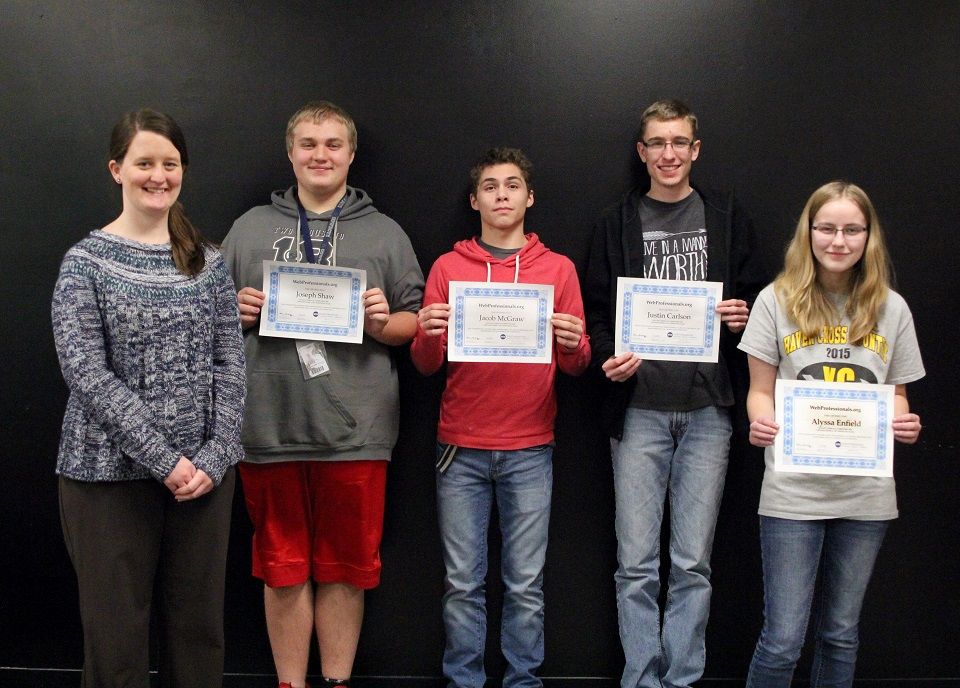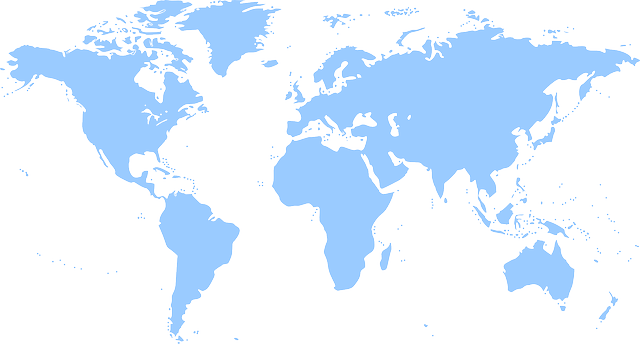Blog
Web Design Class Spawns Certifications and Business
It is never too early to start your web design career.
Today we are highlighting Penny Allen and Nick P. of
Massac County High School in Metropolis, IL. Penny teaches our
Web Design curriculum, and Nick is one of her students who recently earned his Web Design certification and is the first high school student in the state of Illinois to do so with the new Learn and Earn program.

Nick has already designed the website for a local bakery, Miranda’s Delight. The Web Design course helped teach him the skills to build the site and he is now taking the website to the next level by consulting with search engine optimization (SEO) experts to learn how to get more people to see his site while searching online. We are so proud of our teachers and students who utilize our courses. Students like Nick are “future-proofing” themselves with international industry-recognized certifications that they can take with them into their future educational and professional endeavors. With the changing world of work, having certifications to set yourself apart is more important than ever before.
We caught up with Penny and Nick to hear about their experiences with the Web Design course and working with the CTeLearning team.
Hear from Penny
How have you enjoyed teaching the Web Design course?
I like to watch students in this course. Web Design has shown me that some of those students that are normally quiet and don’t always make good grades have really excelled in this course. This year has been no different. I have one student that thought his only future might be working as a stocker at Wal-Mart or something similar. He has a talent for Web design and picked up code like it's his everyday language.
What does it mean to you to get your students “future-ready” (certifications, more than just tech skills, etc.)?
This course and certification gives students a way to make money now and not have to wait until they graduate. Most college students have to work in lower wage jobs while going to college and work long hours during the evening or late nights. This certification will give them the freedom to work when they want, making much more money while going to school.
What would you say to other teachers who are interested in teaching this curriculum?
If you have never taught web design before, at first you might be confused but just give yourself a minute and let things unfold. The curriculum engages the students with very straightforward tutorials and fun projects. Your students will pick up the code quickly and you will be amazed at what they can do!
What do you think of the Learn and Earn Model?
When I introduced the idea of the Learn and Earn model to my students, we talked about how industry professionals were going to underwrite the cost of the students receiving their certifications if they worked hard. I asked my students what they thought about the idea of doing the work and projects in lieu of an exam, and they agreed and said it was a better idea. With an exam they could just memorize a bunch of ‘stuff,” pass the test, and then immediately forget it all. However, this model means they actually have to learn it and use it! This encourages them to remember the material. We are all thankful to the partnership between CTeLearning and Web Professionals Global for this opportunity.
What do the students like about sharing their projects with each other?
The text adventure game got them into a competition on how imaginative they could get and then they played each other’s game. They enjoyed competing!
What do you enjoy about the teaching world compared to working in industry?
If I am able to master an area, then I will get bored with something very quickly. Teaching is always a challenge as not one student is alike and each one is uniquely challenging in how to reach them. I have to adapt and think of new ways to teach the lesson in a way that they will understand it. That can be done in multiple ways and at different times. This is never the same way, so there is never a chance to get bored.
What else would you like to say about your experience teaching the course?
It's not my first year teaching web design, but it's my first year teaching this course, like I have with this model. I've taught other parts like Dreamweaver and Google Sites, but this is the first time just doing the course and certification. So it's been really nice to see, you know, the straight coding side of things. It’s been great to see different kids with different skills, who might not be straight A types, excel in this class. They see how they can flourish in a different career aspect, as opposed to subjects like English and math where they might not do as well. And they're the ones helping the kids that normally make the straight A's in other classes. It’s really refreshing to see that. For those reasons, I really like teaching the course.
Hear from Nick
What attracted you to wanting to be a web designer?
Well, really I think it was this class. I had never really considered web design until I started taking this class this year. It was always something that I was sort of interested in because I'm also really interested in graphic design and like video production. And I feel like those three kind of fall under the same category of creating things online. And this is probably the easiest form for me, because I'm not the most creative mind, I guess I'm a lot better at taking instruction and then putting it out on a piece of paper. And that's kind of what this is, with graphic design. I really enjoy it and have fun with it. Although I don’t necessarily have an artistic mind, for some reason web design just comes naturally to me.
How do you feel about the idea that you're actually earning industry credentials right now in high school?
It's honestly kind of surreal, because I never assumed that I could, I guess achieve something like this while I'm still in high school. It seems like something that is out of reach for a high schooler, and then to have that opportunity and be going through it right now is really strange but cool.
How exciting is it that this course has helped you realize some of your goals?
I think it's really exciting. I've been trying to do this for years but never had success until now. So being able to work with a client, build the website and get a site host and then have a complete site is really cool. And having the certification is great because I can carry it with me in my future.
What was it like hearing from industry professionals?
Oh yeah, in the lessons the professionals really clarified a lot of the things that I was really confused about. And I think hearing advice from people who do this in their daily lives is really great. Obviously teachers help a lot, but sometimes you want to hear from people who actually work in that field. And hearing from multiple people gave me different perspectives on different concepts as well.
We hear that you’ve already started your web design business. Is that true?
Yeah, I've actually just finished my first client. I've published that website, actually, and it's up right now. I am struggling with the SEO right now. I'm not exactly sure how search engine optimization works at the moment. But I've been researching that a lot today and yesterday, and I've got it published, I just need to get it out there really, for people to search it.
What else did you enjoy about the course?
One of the biggest things I've taken from it is understanding the sitemap. My client knew what she wanted for the site, but I wasn’t sure how to format it. The sitemap lesson really helped me because I could organize my ideas into web pages. Although the website only has four pages right now, I know how to organize everything if the site expands.
What do your parents think about the fact that you're getting a certification while in high school?
They're actually really impressed with it, because I guess I hadn't properly explained to them that I was getting certifications until a couple months ago. I just kind of walked in the house with the certification. And my mom was like, where did you get this from? And I was, Oh, it's my web design class that I've been taking for a couple months now. And I think she's just really proud of it because I guess she didn't know that my school offered something like that either. As far as I know, we don’t have other certifications offered at the school.
What would you say to other students who might be interested in this class and certification?
I've actually already suggested it to a couple people because the juniors just went through and picked their electives for the next year. I told a few people that I highly suggest this class. I just tell them to keep an open mind about it. This is not a class that people come into that want to go be a veterinarian or something like that. This is a class you explore if you’re interested in the field of computer science. You don't have to have any sort of insane computer skills to be able to pick up any of this work. It's accessible to anybody. And I didn't even realize that until I walked into this classroom and started doing it myself. When I came into this class I could barely type on a keyboard without looking at it, and now I have built a website.
Your Class Could be Next
Teaching Web Design is easier than you might think. With our turnkey curriculum, you can give your students the opportunity to explore an in-demand and high-paying career pathway. Students like Nick are using the course and certification to prepare for their futures, all while in high school. Contact us today at 913-764-4272 or hello@ctelearning.com for a free 20-minute demo so we can show you how we can help your school.
Share To
Get in touch with us today!
You can book a demo directly using Calendly, call us directly at 913-764-4272 or 877-828-1216, or submit the form and we will reach out to you.
We look forward to helping you and your students.

Most Recent Posts




